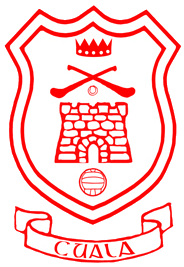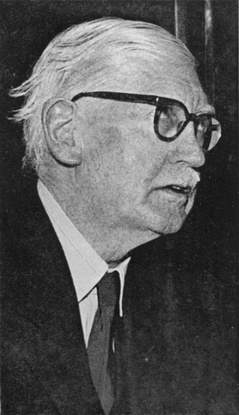
The Wicklow Mountains form the largest continuous upland area in Ireland. They occupy the whole centre of County Wicklow and stretch outside its borders into the counties of Dublin, Wexford and Carlow. Where the mountains extend into County Dublin, they are known locally as the Dublin Mountains. The highest peak is Lugnaquilla at 925 metres.
Eblana is an ancient Irish settlement that appears in the Geographia of Claudius Ptolemaeus (Ptolemy), the Greek astronomer and cartographer, around the year 140 AD. It was traditionally believed by scholars to refer to the same site as the modern city of Dublin. The 19th-century writer Louis Agassiz used Eblana as a Latin equivalent for Dublin. However, more recent scholarship favours the north County Dublin seaside village of Loughshinny due to its proximity to Drumanagh, an important trading site with strong links to Roman Britain; it has even been described as a bridgehead of a possible Roman invasion. However, there is no definitive proof to tie Eblana to any location, so its exact identity is still a matter of speculation.
Caladbolg is the sword of Fergus mac Róich from the Ulster Cycle of Irish mythology.

The Iverni were a people of early Ireland first mentioned in Ptolemy's 2nd century Geography as living in the extreme south-west of the island. He also locates a "city" called Ivernis in their territory, and observes that this settlement has the same name as the island as a whole, Ivernia. It was probably once the name given to all the peoples of Ireland, but by Ptolemy's time had a more restricted usage applicable to the inhabitants of the south-west. These Iverni can be identified linguistically with the Érainn, a people attested in Munster and elsewhere in the early Middle Ages.

Crimthann Mór, son of Fidach, also written Crimthand Mór, was a semi-mythological king of Munster and High King of Ireland of the 4th century. He gained territory in Britain and Gaul, but died poisoned by his sister Mongfind. It is possible that he was also recognized as king of Scotland. This Crimthann is to be distinguished from two previous High Kings of Ireland of the same name, two Kings of Leinster, and another King of Munster, among others. Importantly, he is included in the Baile Chuinn Chétchathaig (summary), and is thus the last High King of Ireland from Munster until Brian Bóruma, over six hundred years later.

The Conmhaicne were a people of early Ireland, perhaps related to the Laigin, who dispersed to various parts of Ireland. They settled in Connacht and Longford, giving their name to several Conmaicne territories. T. F. O'Rahilly's assertion the Conmaicne were non-Goidelic is not widely accepted.

Cuala GAA club is a Gaelic Athletic Association club based in Dalkey in the south of County Dublin, Ireland. It fields teams in Dublin GAA competitions. Cuala is primarily based in a sports and social centre in Dalkey, and also has playing facilities in Glenageary, Meadow Vale/Clonkeen Park, Shankill and Sallynoggin.

Great Sugar Loaf at 501 metres (1,644 ft), is the 404th–highest peak in Ireland on the Arderin scale, however, being below 600 m it does not rank on the Vandeleur-Lynam or Hewitt scales. The mountain is in the far northeastern section of the Wicklow Mountains, in Ireland, and overlooks the village of Kilmacanogue. The profile of the mountain means it can be mistaken for a dormant volcano. It owes its distinctive shape, however, to the erosion-resistant metamorphosed deep-sea sedimentary deposit from which its quartzite composition was derived.

Furbaide Ferbend is a character from the Ulster Cycle of Irish mythology. Legend has it that Furbaide Ferbend was buried in a passage grave atop Carn Clonhugh, more commonly known as Corn Hill or Cairn Hill, north Longford, after the two passage graves that crown the summit.
Uí Máil were an Irish dynasty of Leinster. They were descended from Maine Mál, the brother of the legendary high king Cathair Mór. The Uí Máil were a dominant dynasty in Leinster competing for the kingship in the 7th century before being eventually ousted by the Uí Dunlainge and retreating east from the River Liffey plain in the 8th century. They are then found along the western foothills of the Wicklow Mountains. The Glen of Imaal, named for them, appears to have been a center of their power.
Muiredach mac Murchada was a King of Leinster from the Uí Dúnlainge branch of the Laigin. He was the son of Murchad mac Brain Mut, a previous king. He ruled from 738 to 760.

Tethbae was a confederation of túatha in central Ireland in the Middle Ages. It was divided into two distinct kingdoms, north Tethba, ruled by the Cenél Coirpri, and south Tethba, ruled by the Cenél Maini. It covered parts of County Westmeath and much of County Longford, counties which today are the far north-west part of the province of Leinster. In some cases, Tethbae may refer to South Tethbae only.
Amergin mac Eccit is a poet and warrior in the court of Conchobar mac Nessa in the Ulster Cycle of Irish mythology. He was the son of Eccet Salach, a smith, and grew to the age of fourteen without speaking or washing himself. One day Athirne, the Ulaid's chief poet, sent his servant to Eccet to order an axe. The servant was shocked when Amergin uttered a precocious, cryptic poem, and ran home to tell his master what he had heard.
Dáire is an Old Irish name which fell out of use at an early period, remaining restricted essentially to legendary and ancestral figures, usually male. It has come back into fashion since the 18th century. The anglicised form of this name is Dara.
Lugaid Loígde "Lugaid of the Calf Goddess", also known as Lugaid mac Dáire, was a legendary King of Tara and High King of Ireland. He is a son of Dáire Doimthech, ancestor of the Dáirine, and gives his epithet to their principal royal sept, the Corcu Loígde. A descendant of Lugaid, with whom he may be to some extent identical, is the famous Mac Con, listed in the Old Irish kinglist Baile Chuinn Chétchathaig as Mac Con macc aui (moccu) Lugde Loígde.
Slíghe Chualann was a road in Early Christian Ireland running south across Áth Cliath entering the territory of Cualu or Cuala before going west of the Wicklow Mountains. The ancient name for Dublin was 'Baile Atha Cliath', the 'Ath' means "ford river crossing", while 'Cliath' means wattled, lattice framed, hurdle. It was one of the five great roads of Ireland; in legend these converged at Tara, inauguration site of the High King of Ireland, but in fact the Slíghe Chualann and three others met at Dublin.

Liam Price was a County Wicklow judge, historian and former president of the Royal Society of Antiquaries of Ireland (RSAI) who published work on historical topography and the history of placenames, especially for the county of Wicklow, where he was a district justice. His work on these areas has been published in journals and books and his contribution, totalling about 40 papers, was acknowledged in a special issue of the Journal of the Royal Society of Antiquaries of Ireland in 1965, shortly before his death in 1967.
Sovereignty goddess is a scholarly term, almost exclusively used in Celtic studies. The term denotes a goddess who, personifying a territory, confers sovereignty upon a king by marrying or having sex with him. Some narratives of this type correspond to folk-tale motif D732, the Loathly Lady, in Stith Thompson's Motif-Index. This trope has been identified as 'one of the best-known and most frequently studied thematic elements of Celtic myth'. It has also, however, been criticised in recent research for leading to "an attempt to prove that every strong female character in medieval Welsh and Irish tales is a souvenir of a Celtic sovereignty goddess".
Rathdown Castle is a ruined castle and ancient settlement site located in County Wicklow, Ireland.








